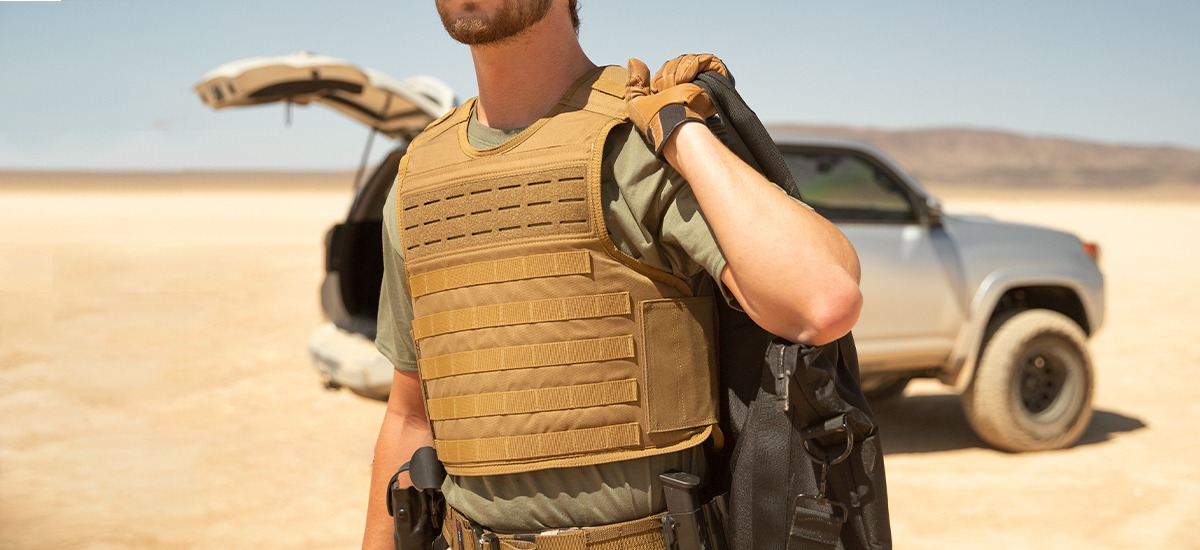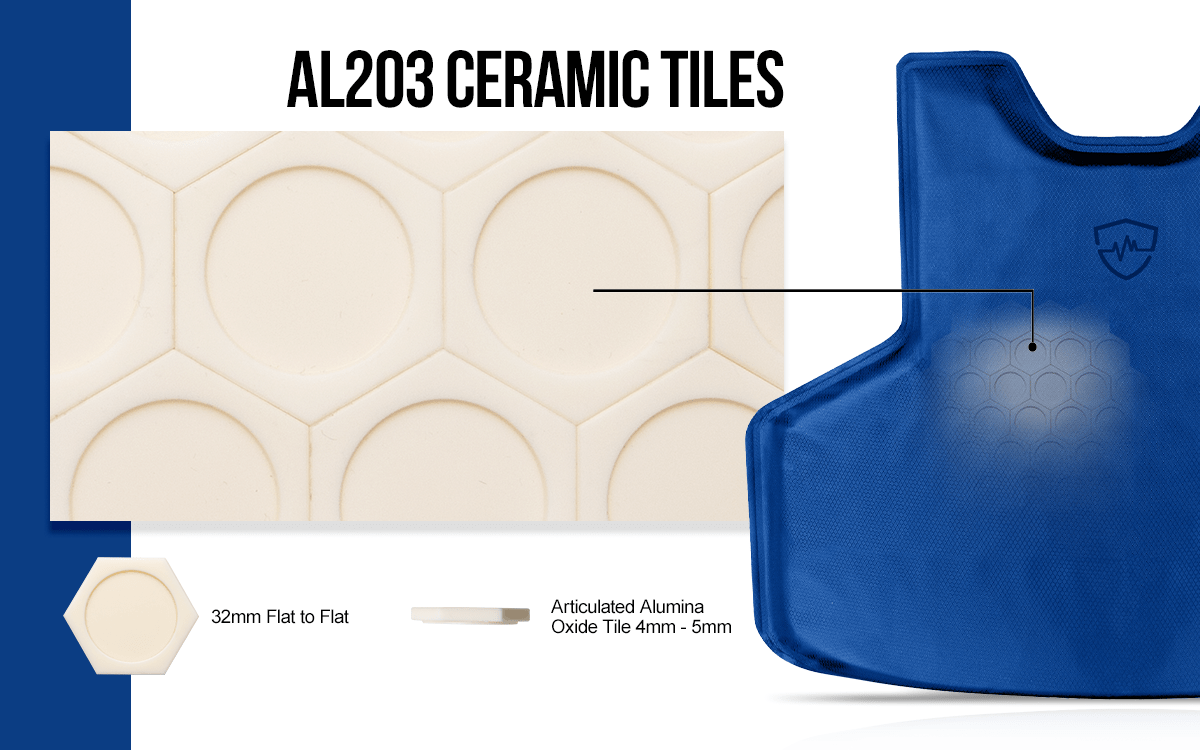Thinnest Armor BACK IN STOCK
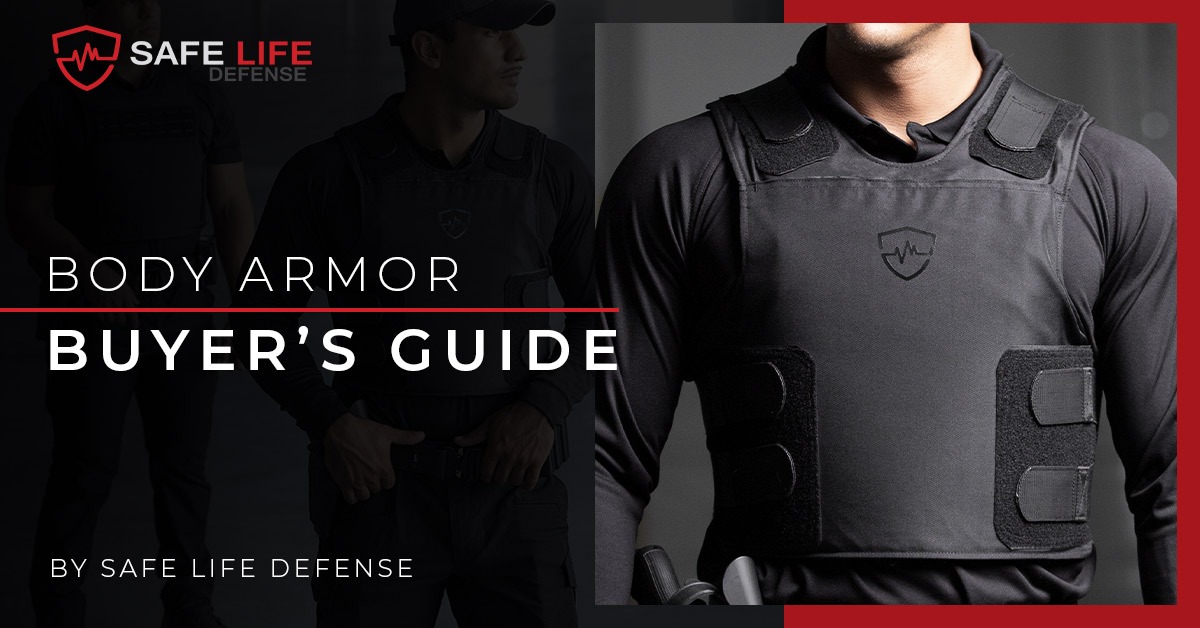
Body Armor: The Ultimate Buyer’s Guide to Choosing the Best Body Armor
Body Armor Basics: Restrictions, Components, and Composition
Is it legal for civilians to own body armor?
You may be surprised to learn that body armor is legal for almost anyone to possess or use in all 50 states within the United States. Oftentimes, consumers are under the impression that this type of protective gear is illegal to own unless they’re a first responder, law enforcement officer or involved in the military services — but that is simply not true.
With the exception of the following restrictions, body armor is completely legal:
- You must be a law-abiding civilian and intend to wear your armor for permitted uses.
- You must not commit a crime while wearing armor. Such action will increase legal penalties significantly.
- You must not have been convicted of a violent felony or intend to participate in criminal activities while wearing your armor.
- You must purchase your armor face-to-face with a local dealer if you live in Connecticut or purchase your armor online and have it shipped to their location for pickup. This product cannot be shipped directly to a civilian in the aforementioned state.

Why did I hear it is illegal to own body armor?
We frequently hear people say, “I tried to order from another company and they told me that only law enforcement officers could own armor.” Because of this type of interaction, many individuals believe that body armor is illegal to own. What you need to know is that a large number of manufacturers and retailers restrict their sales to law enforcement only. However, these restrictions are based on individual company policies and are not reflective of federal, state or local laws. It is 100% legal for upstanding civilians to wear, purchase, and own body armor. (With the exception of the state of New York.)
Without discrimination, Safe Life Defense seeks to provide the best body armor for all morally sound and ethically inclined citizens. If you follow the law, you can purchase our body armor. We will never restrict our sales to only professional lines of work because everyone has the privilege and the right to own these products for protection. Body armor is a life-saving safety tool designed for peace of mind, prevention of injury and preservation of life. We believe it should be treated as such and accessible for all who meet these standards.
Soft Body Armor
Those looking for a more comfortable armor option usually select soft armor, even though it may offer less protection than other types. Soft armor is very light and can flex for added comfort. This makes it the most concealable type of body armor and a great option for those who don’t want to feel like they’re lugging extra weight around. Current soft body armor can stop most handgun rounds, but armor plates are needed to stop rifle rounds and steel-core handgun rounds like 7.62×25mm.
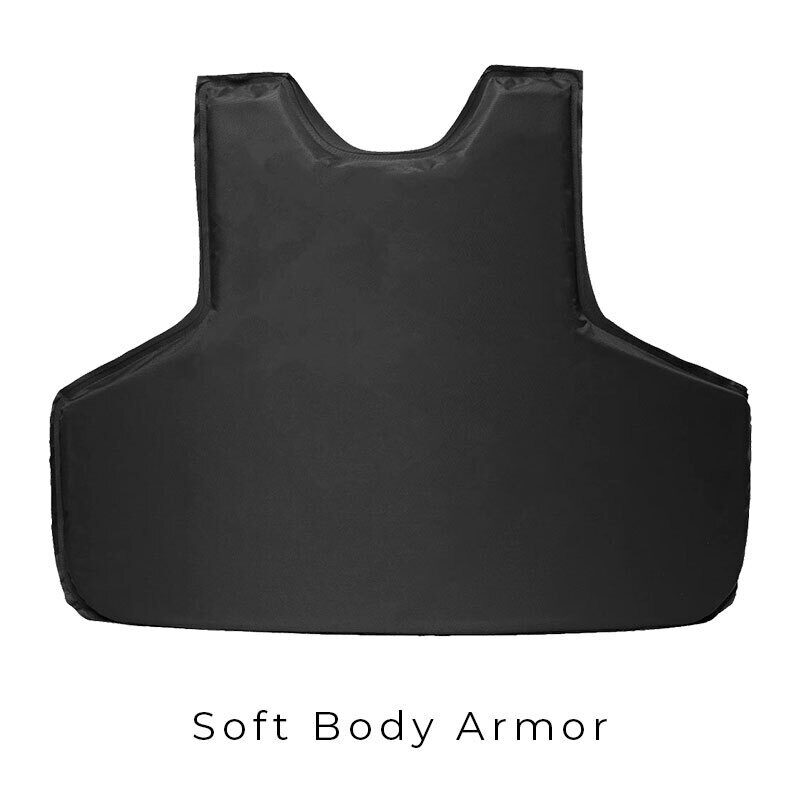
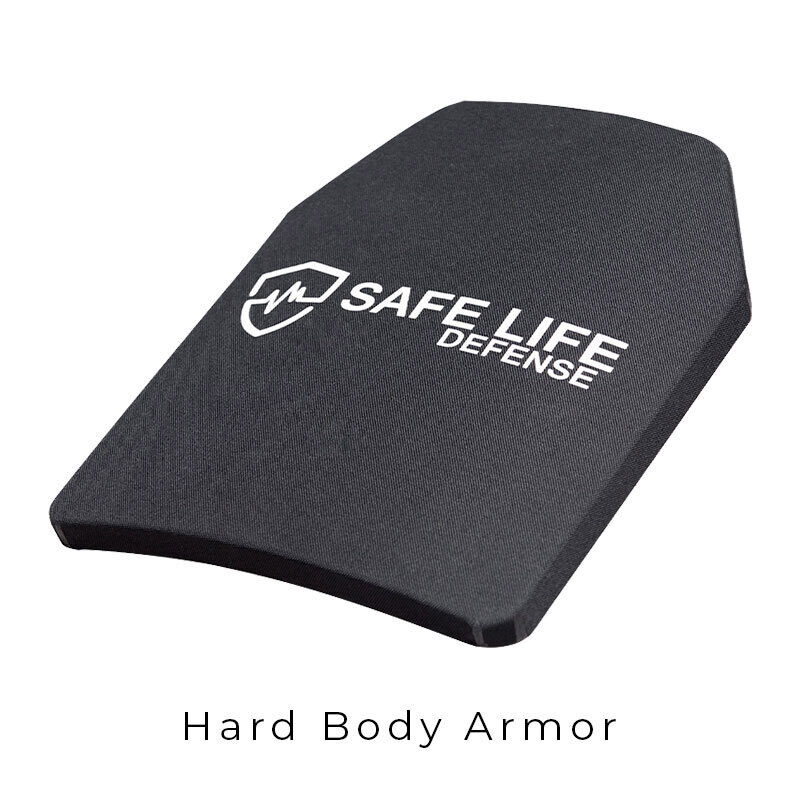
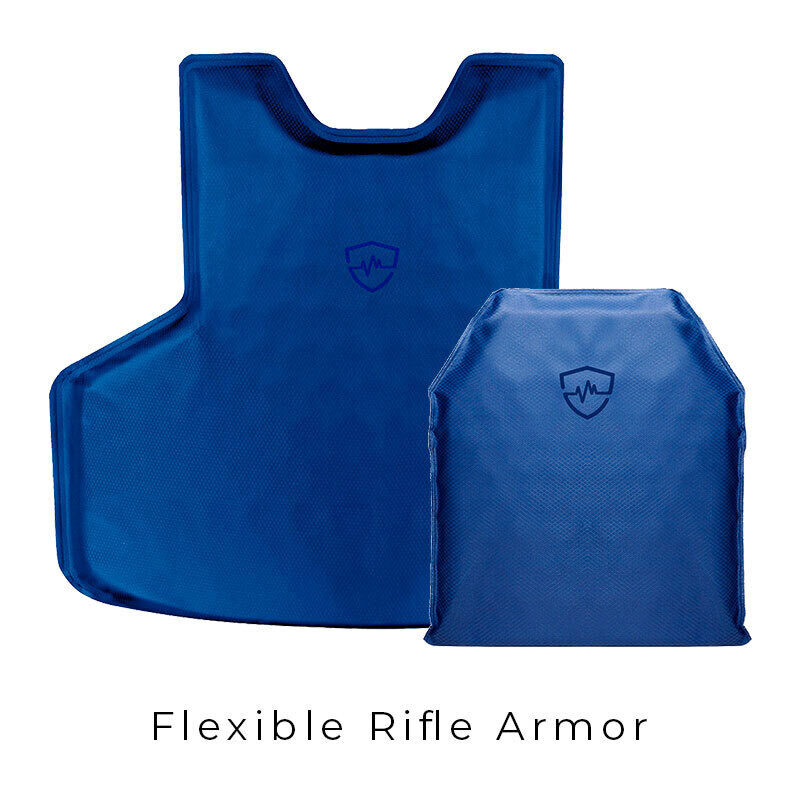
Hard Body Armor
For additional protection, many people will choose hard armor plates. They are made from rigid, reinforced plates that are generally used in high-risk situations where rifle fire is likely. You often see hard armor plates worn by police tactical units and combat soldiers. What’s important to remember is that this body covering is not just about having a second line of defense against guns, it’s about having a safeguard against knives and other deadly weapons, too. The handoff for a greater level of protection is that it is difficult to conceal. But beware, not all hard body armor plates are rifle rated.
Flexible Rifle Armor
Although hard armor used to be the best form of rifle protection, that no longer holds true. Truly flexible rifle armor is something many of us could have only ever dreamed of in previous years, and now it’s here! Safe Life Defense’s Flexible Rifle Armor feels and conceals just like soft armor plates, covers more of the torso, and offers increased protection…but it’s rated to defend against .223, 5.56 and 7.62×39. It works great to replace uncomfortable hard body armor, like rifle plates, and can stop projectiles that present a threat level greater than handgun and shotgun ammunition.
FRAS® panels provide full front, rear and side coverage while still being lighter than most traditional rifle plates. Just like soft armor, our Flexible Rifle Armor is truly innovative and maintains excellent back-face signature ratings. That means when testing, it meets the NIJ standard for 44mm deformation after impact. It can even be used in conjunction with IIIA+ soft armor to achieve level III ICW protection and is handgun, shotgun, strike, slash, stab and Taser resistant. It’s quite literally unmatched by anything on the market — and that’s safety at its finest.
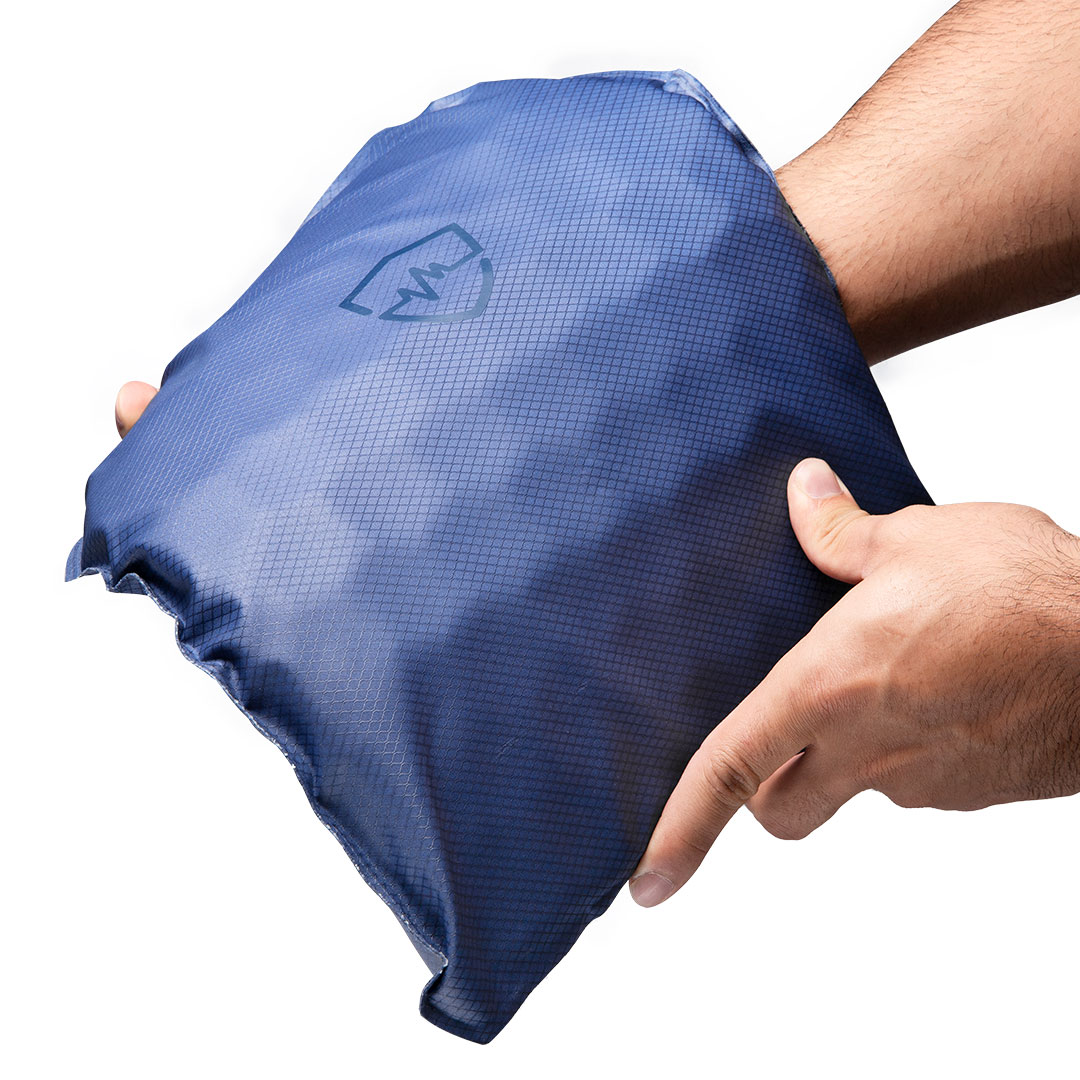
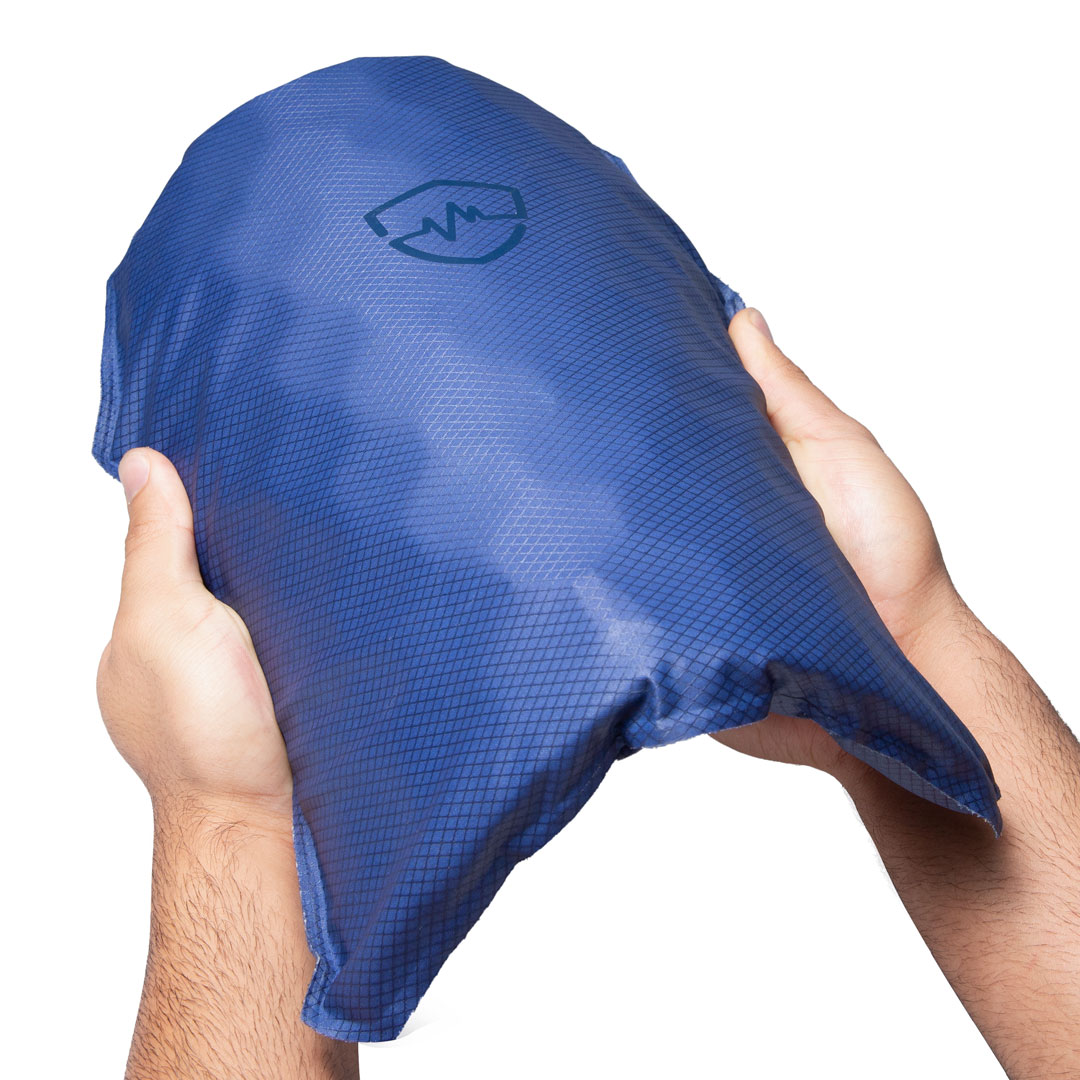
Enhanced Multi-Threat™ Armor
This classification is exactly like it sounds! Our Enhanced Multi-Threat™ Vest options are augmented to provide additional protection. Safe Life Defense’s IIIA+ armor reliably defends against Liberty Civil Defense 9mm armor piercing ammunition and FN 5.7×28 40 gr. along with common handgun rounds including .357, 9mm, and 45 ACP up to .44 Magnum. It also provides additional protection against shotgun rounds like 00 buckshot, 12 ga. slugs, and even high-velocity submachine gun rounds. Level IIIA+ is spike-rated NIJ level 1 for protection up to 36 joules of stab force. In conjunction with our level IV rifle plate, our armor protects against rifle threats up to .30-06. These vests not only stop bullets, but they’re also strike, slash, stab, tasers, and special threat resistant.
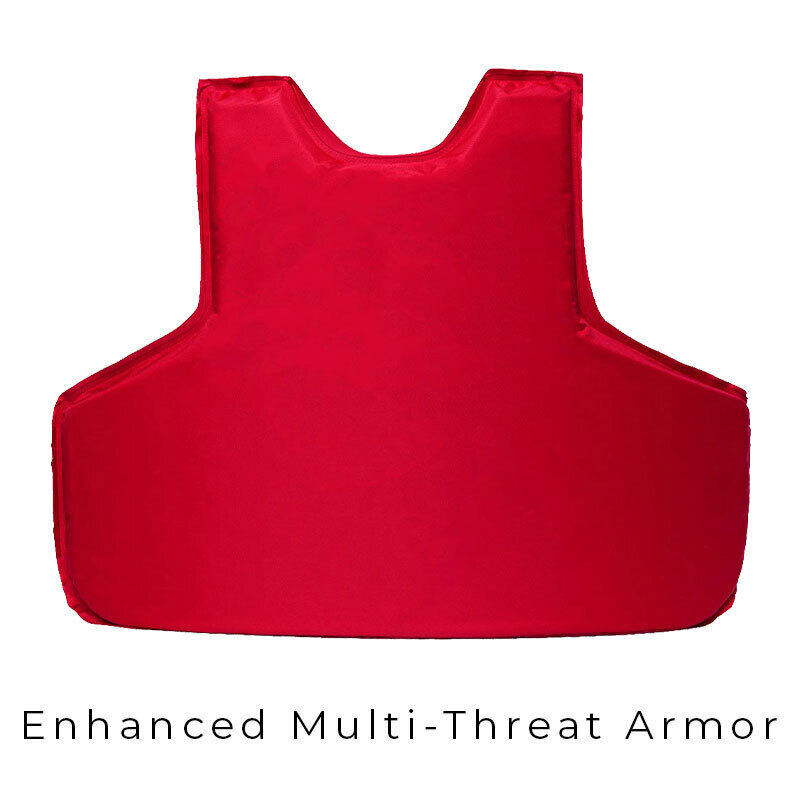
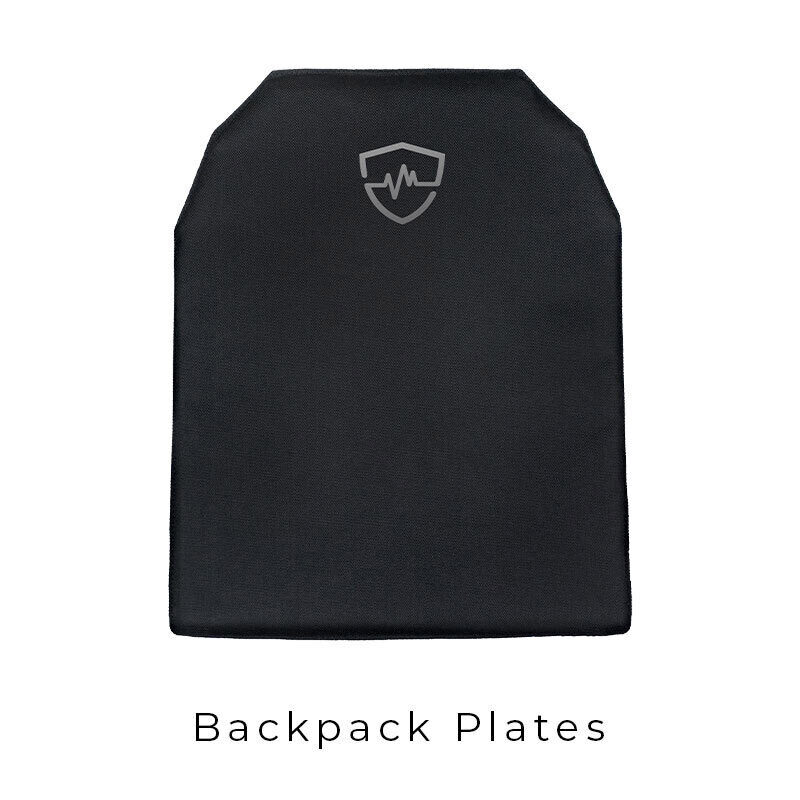
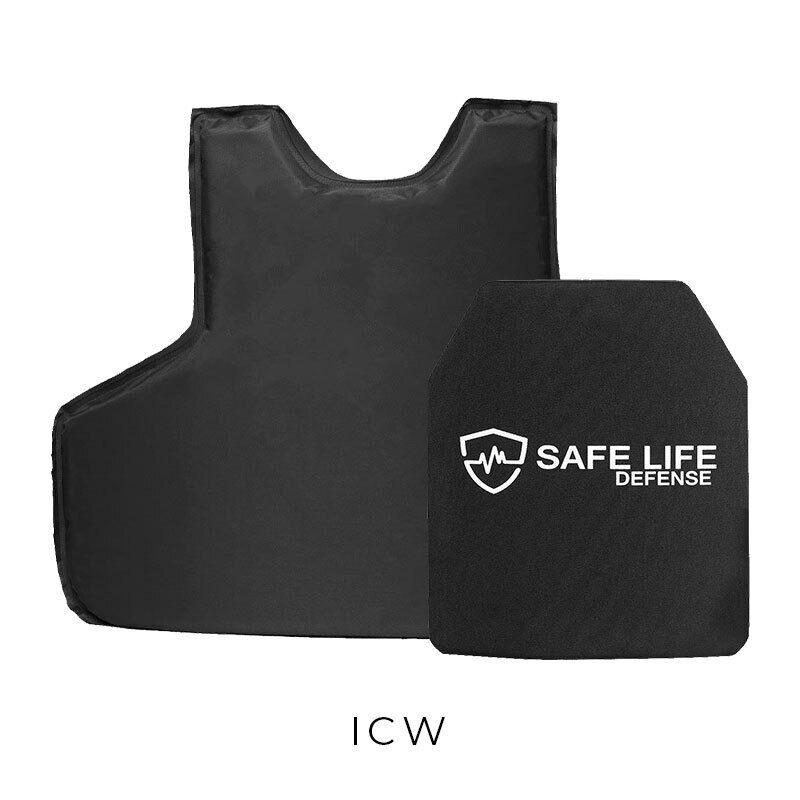
Backpack Plates
Even though sales of bulletproof backpack inserts and bags have spiked, most of these products currently on the market would not have stopped a single rifle round coming from a gunman. Despite popular belief, it’s not always handguns that shooters are using, but rather high-powered rifles like the AK-47, AR-15 and those you might find in the family gun safe for hunting.
Adequate protection against these types of firearms requires a completely different kind of backpack insert. For it to withstand an attack with these types of weapons, it must be classified by the NIJ as level III. For maximum protection, you can pair a 10×12 FRAS® plate with a IIIA or IIIA+ Vest in your plate pocket to achieve level III+ protection against threats up to .308 and 7.62x54R.
What does ICW mean on a rifle plate rating?
ICW (In Conjunction With) Rifle Plates are typically hard plates that must be used with level IIIA soft body armor to achieve its official ballistic rating, but FRAS® can also be used as an ICW plate option. ICW plates are lighter, thinner and achieve higher body armor levels of protection. Safe Life Defense incorporates low-profile front and rear pockets into all soft armor systems so you can add Level IV ICW Rifle Plates when encountering a higher threat level. This allows the armor system to be highly adaptable. You may comfortably wear your soft armor daily (concealed or externally) for protection against common daily threats, but if a higher threat situation arises, ICW plates can be quickly added into the low-profile pockets to protect against some of the heaviest rifle ammunition out there!
What does SA mean on a rifle plate rating?
SA (Standalone) Rifle Plates are designed to be used on their own to achieve the specified NIJ rating without a soft armor backing. These plates are useful if you are focused solely on rifle protection. Rifle plates alone have a much smaller coverage area than soft body armor and will leave areas of your torso vulnerable that would otherwise be protected by soft armor. Our FRAS® Vests are both ICW and SA and a great option to cover all of your bases.
What materials are used in body armor?
Para-Aramid Fiber
Para-aramid fiber has been a longtime standard for ballistic material. It is 5 times stronger than steel and is more flexible (and comfortable) than most other options. This particular type of fiber has a higher melt point of 750 degrees Fahrenheit, is exceptionally resistant to abrasion damage, and maintains good backface signature ratings with impact. That means less deformation and less overall blunt-force trauma. Aramid fibers are tried, true, and battle-proven, but it is important to keep moisture in check and protect your vest from UV rays. Some of these fibers, like Kevlar®, are made by combining para-phenylenediamine and terephthaloyl chloride to create aromatic polyamide threads which are then refined and woven into the panels. However, Safe Life Defense does not use Kevlar® materials and the like.
After extensive research into alternative ballistic options, we decided on a custom manufactured para-aramid for all soft body armor that uses Twaron®. Because of this ingenuity, our vests are bullet, strike, and slash-resistant and our enhanced IIIA+ panels are also stab, taser and special threat resistant. Aramid fibers have saved thousands of lives and will continue to do so for a long time!
Polyethylene – Often Called PE or UHMWPE
Polyethylene is one of the more prevalent options on the market and it’s actually the most common type of plastic used in the world today. In fact, PE is quite similar to plastic shopping bags from a big box store, but don’t be fooled…it’s heavily engineered and provides a reliable, multi-hit armor when used in hard rifle plates. It is typically made from a specific kind of polyethylene, called Ultra-High-Molecular-Weight Polyethylene (UHMWPE). UHMWPE is rated as the most durable thermoplastic coming in at 5 times the strength of steel. It’s also proven to be 15 times more abrasion-resistant than carbon steel. UHMWPE is often found in cost-effective body armor as it is generally much cheaper than other ballistic materials to produce, but more expensive than ceramic and steel plates.
At Safe Life Defense, we use a blend of ceramic and pressed UHMWPE in our hard rifle plates, which helps reduce the overall weight significantly. A blend of these materials (and others) is used in distinct layers of our FRAS® Vest in a ratio that helps combat the degradation possibilities in extreme conditions (like those found in your car trunk on a hot day).
The proprietary AL203 ceramic elements in FRAS® armor are made up of small, hexagonal tiles that don’t overlap. They are arranged into a mosaic pattern with a circular drop base that allows for an extremely wide range of multi-directional flexibility. AL203 discs are far less brittle than other ceramic options like silicon boride and silicon carbide and they are superior for impact resistance and safety when compared to traditional rifle plates. When hit by multiple rounds, only individual tiles are compromised, rather than large sections of the plate. Our FRAS® passes the NIJ drop tests with ease, resulting in zero fractured tiles. Each disc has beveled edges that direct rounds toward their center and rounds cannot penetrate at the seams even when flexed. This is because the seams quickly close in on one another creating a depressible substrate that tears the round apart (even at extreme and unrealistic angles). AL203 discs will not fall apart as adhesion makes full contact. You can expect unbelievable multi-hit protection and significantly reduced weight, comfort, and flexibility.
Zylon
Zylon is a low-quality synthetic polymer material made from a range of thermoset liquid-crystalline polyoxazole. It is stiffer than steel and has high thermal stability. Remember this name and stay away from it, and if you have Zylon body armor already, replace it as soon as possible! Zylon has been banned from many agencies due to massive recalls and defects that left wearers seriously injured or mortally wounded. Not too long ago, the U.S. federal, state, local and tribal law enforcement agencies purchased body armor made with Zylon and experienced this first hand. This material is NOT recommended as it has been proven to fail under various conditions and is not worth the risk.
Carbon Nanotubes
Carbon Nanotube is a new allotrope material that’s comprised of cylindrical carbon molecules. Each single-walled nanotube is made up of a hexagonal network of covalently bonded atoms. Knit together, they’re said to be over 100 times the strength of steel! CNTs are strong, lightweight, flexible and thanks to their high elasticity, they’re able to absorb an extreme amount of energy. Although preliminary results show improved impact puncture and penetration resistance, more research and testing is still needed before this material fully hits the market.
With enhanced protection against blunt trauma effects, CNTs show an immense amount of promise for future body armor use. But one of the hurdles manufacturers will have to face is the overwhelming cost of production. Maybe one day these carbon nanotubes will be the standard, but until costs come down significantly, this type of body armor won’t be taking over.
Steel
Steel is a very cost-effective material and that’s one reason it’s so widely seen in body armor. Another reason is that it’s very easy to care for and often has a longer lifespan than other options. There are two types of steel: AR500 Steel and Mil-Spec A46100. The first of these is commonly used in the creation of shooting targets and hard rifle plates, but it is NOT certified by the NIJ. The latter is the same kind the U.S. military uses for vehicles and it’s rated to stop both small arms and explosive shrapnel. If you’re looking to stop a bullet traveling faster than 3,000 fps you’ve found a match because steel plates can take multiple hits without being destroyed. Despite these perks, it does have some setbacks. Steel armor can cause a ricochet, the weight can make wearing plates uncomfortable and the hardness can restrict movement significantly. Standard 10×12 slabs of steel armor can weigh as much as 15 pounds, which means front and rear protection can weigh 30 lbs (or more)! Carrying around all of that extra weight daily is not always practical.
It is, however, a great material if you do not want to spend the money on a more advanced ballistic material. Something is always better than nothing. If you decide to go with steel armor, just be sure the plate has an anti-spall coating. This is crucial for trapping lethal shrapnel after bullets hit and fragment 360 degrees. And if you’re still on the hunt for better body armor, the good news is that there are now improved, lighter options on the market that will even defend against armor-piercing rounds that can penetrate steel body armor.
Ceramic
Modern ceramic armor is generally made from a boron carbide-based composite. It is thick like steel but has the advantage of being lightweight and maintaining a very high degree of hardness. In fact, ceramics are one of the hardest materials for ballistic protection and they’re better at absorbing and dispersing energy than steel. This results in fewer broken ribs, broken sternums and collapsed lungs after impact. And when pitted against supersonic armor-piercing bullets, ceramic does better than steel.
If you’ve never worn a ceramic plate, you’ll quickly find that they can restrict your mobility quite a bit. And chances are, if you’re wearing body armor to protect yourself, you’re going to need to be able to move and move quickly. Even so, there is a more critical reason to forgo full ceramic plates: they shatter on impact and have to be treated with care. It can be nearly impossible to detect fractures and in some cases, the only surefire way to locate one is by taking an x-ray.
National Institute of Justice (NIJ) Protection Body Armor Levels
What does the “NIJ Rating” of body armor mean?
The single most important thing to look for when shopping for body armor is the National Institute of Justice (NIJ) Rating. This rating is the ballistic standard of resistance used in the U.S. and throughout most of the world. Body armor becomes NIJ rated when it passes a strict set of guidelines at a NIJ certified 3rd party ballistic laboratory. The NIJ has been setting standards since 1972, and they’re the only nationally accepted baseline for the body armor worn by law enforcement and corrections officers. It’s the highest level of certification available and a long process for products to get their backing on ballistic performance, which means you can rest assured you’re getting nothing but the best. All Safe Life Defense products undergo ballistic testing at the NIJ-Certified, Oregon Ballistics Laboratory, and our results are always posted on each product page.
What are the different NIJ rating protection body armor levels?

NIJ Level II
What will a level II plate stop?
Level II armor will stop most common handgun rounds including 45 ACP, 9mm, .40 S&W and .357. The National Institute of Justice specifies that level II armor must stop 9mm FMJ bullets with a mass of 124 grains and a velocity of 1,305 ft/s as well as .357 Magnum jsp with a mass of 158 grains and a velocity of 1,430 ft/s.
NIJ Level IIIA
What will a level IIIA plate stop?
Level IIIA armor reliably defends against all common handgun rounds including .357, 9mm, 45 ACP, all the way up to .44 Magnum. Level IIIA protects the wearer from shotgun rounds including 00 buckshot, 12 ga. slugs and even submachine gun rounds. In conjunction with our level IV rifle plate, our armor protects against rifle threats all the way up to .30-06.
Enhanced Multi-Threat Level IIIA+
What will a level IIIA+ enhanced multi-threat™ plate stop?
Level IIIA+ armor is an innovative protection category that is offered exclusively through Safe Life Defense. This enhanced soft armor not only protects against the same threats as our traditional IIIA but also includes NIJ Level 1 spike protection for up to 36 joules of stab force and protection against armor-piercing handgun ammunition such as Liberty Civil Defense 9mm and FN 5.7×28 40 gr. The unique bullet, strike, slash, stab, taser, and special threat resistance found in Safe Life Defense IIIA+ armor make it the world’s most powerful soft body armor!
Our IIIA+ model has the largest number of reported saved lives due to its strike resistance (an often undervalued feature) that has kept people alive after being hit by motor vehicles, falling from a significant height, and taking on blows from a blunt weapon. The second-largest number of saves come from stabbings. Most reports end up saying, “My doctor said without this vest there’s no chance I would be alive today.”
NIJ Level III
What will a level III plate stop?
Level III armor is a hard armor rated for rifle protection. Level III armor is rated to withstand 7.62 mm FMJ (US military M80) rounds with a mass of 147 grains and a velocity of 2780 ft/s. Yes, level III will defeat an AK-47 round.
FRAS® Standalone and ICW
What will a FRAS® plate stop?
FRAS® is a new level of flexible rifle body armor we developed to bridge the gap between level III and level IIIA. FRAS® is rated to defend against the most common rifle threats someone may encounter on duty, including 5.56, ss109 and m193 as well as 7.62×39 — predominantly AR-15 and AK-47 rounds. Safe Life Defense FRAS® provides full torso coverage from rifle threats with a phenomenal balance of protection, weight and coverage. When worn in conjunction with a level IIIA vest, our FRAS® is rated III+ for rifle protection up to .308 and 7.62x54R!
NIJ Level IV
What will a level IV plate stop?
Level IV armor is the highest rating of body armor currently available, and it will stop armor-piercing rifle threats. It can withstand up to 30-06 M2ap steel core armor-piercing rounds with a mass of 166 grains and a velocity of 2880 ft/s. Many people choose to have a Level IIIA vest accompanied by in conjunction with (ICW) rifle plates to achieve a higher level of protection. Safe Life Defense offers lightweight level IV ICW rifle plates that are designed to slide into low-profile pockets on our level IIIA vests. This allows you to adapt your armor to a variety of threat levels without making it too cumbersome for daily use.
 What NIJ rating is best for me?
What NIJ rating is best for me?
The best level of body armor for you depends on your personal needs and wants. First, ask yourself, “Do I need protection against handguns, shotguns, rifles or all three?” Then ask yourself, “Do I also need to be protected from bladed weapons, Tasers, blunt-force trauma or all three?” Lastly, evaluate your expectations for this life-saving piece of equipment. Remember, except for FRAS® vests, there is a direct trade-off between protection, comfort and concealability. Generally, the higher the protection level, the heavier and less concealable the armor. The best armor for you is the armor you’ll actually wear. With that in mind, it is highly beneficial to select the lightest option that will protect you from the threats you are most likely to encounter.
If you are like most of us and need protection from handguns as well as shotguns you’ll want to select body armor like the Safe Life Defense Multi-Threat Vest. It comes in level IIIA (which is great for threats all the way up to 12 gauge slugs!) Nowadays, most people are deciding to go with one of our most popular options, the IIIA, because it offers a great deal of protection while still being lightweight and easily concealable. Safe Life Defense Multi-Threat Vests are also strike and slash-resistant! Protection from bullets, bats, and blades? We’ve got you covered.
If you anticipate you’ll need to face a rifle-related threat, then you’ll want to get some heavy-duty gear. For this type of protection, you can select one of two types of armor: (1) Hard body armor, which is rated NIJ III and IV. This type of armor will be much heavier and less concealable than the majority of soft armor, but the tradeoff is a much higher level of protection. Or (2) Safe Life Defense’s Revolutionary FRAS® body armor, the most versatile, comfortable and protective option. Our Multi-Threat Armor System will also work with removable rifle plates that can be used with a level IIIA vest for adjustable levels of protection (IIIA to IV). You’ll have all the benefits of Level IV armor without sacrificing wearability!
Body Armor Maintenance, Storage and Care
Can I test shoot my armor?
WARNING: Testing your body armor is NOT recommended and you should NEVER test armor while you or any other living being is wearing it. Failure to follow this guidance can lead to a major safety hazard, serious injury, or accidental death.
All Safe Life Defense body armor is professionally tested in labs and per NIJ standards. In a ballistic panel with one of our IIIA+ vests, we were able to fire 342 shots before failure. Although our armor is proven to withstand multiple hits, any armor that has been tested must be replaced immediately and cannot be used for protection as its integrity will have been compromised. Stopping a bullet is serious business and even a single shot WILL damage your armor no matter how great it is. If you would like to test shoot your armor, please do so in a safe environment with the assistance of a professional.
How do I care for and clean my body armor?
Body armor will need to be washed just like any other article of clothing, especially if you are wearing it on a daily basis! Cleaning a Safe Life Defense carrier is easy and can be done in a washing machine as long as the ballistic panels are removed before washing. Since air drying is the best way to ensure a long carrier lifespan, an extra carrier is recommended. Having a spare will allow you to transfer your ballistic panels into the clean carrier while your soiled carrier is properly cleaned. It is important that you never go without protection. For additional information, please read the following instructions carefully:
Cleaning Instructions for Safe Life Defense Body Armor
- Remove the ballistic panels from the outer carrier. DO NOT MACHINE WASH OR DRY CLEAN the ballistic panel insert(s).
- Wipe the ballistic panels using a MILD SOAP AND WATER solution, then set the panels aside on a flat surface to air dry.
- To maintain the form, function, and prevent damage, CLOSE ALL OF THE VELCRO FASTENERS on the carrier.
- Dry clean, hand wash or machine wash the carrier on a delicate cycle using a medium water temperature. DO NOT USE BLEACH.
- Tumble dry the carrier on a LOW HEAT SETTING or air dry it on a flat surface. Iron on a low heat setting as needed.
- Reinsert the ballistic panels into the carrier. Be sure the panels and outer carrier are COMPLETELY DRY before assembling.
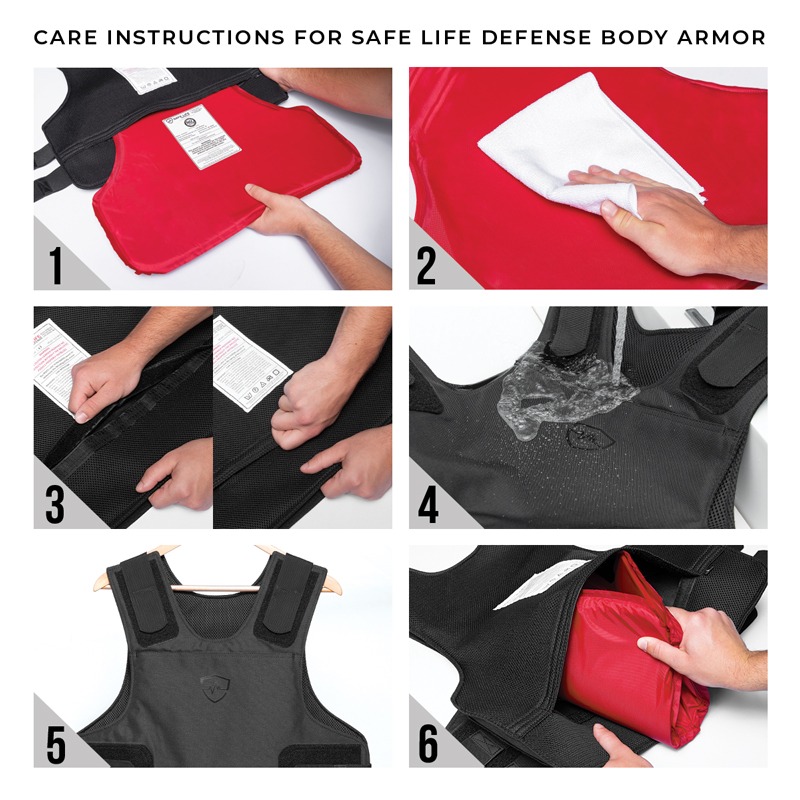
How should I store my body armor?
If you want your body armor to last, you must store it properly. Improper storage can degrade performance and increase your risk. If you have your armor bunched up, rolled or placed on an unstable edge (rather than on a flat surface) you may be inadvertently reducing its effectiveness.
Best practices include storing your vest in a room temperature environment where it can lie flat or on a hanger, and be kept away from direct sunlight, dirt, chemicals, and moisture. Always avoid leaving your armor in a hot vehicle for an extended period of time and placing other items on top of it. For travel purposes, we recommend utilizing a Safe Life Defense Body Armor Carry and Storage Bag for added convenience and protection.
Essential Body Armor Warranties and Guarantees
What guarantees should I look for when purchasing armor?
Almost all body armor companies provide some type of guarantee along with a manufacturer’s warranty, but not all of these safeguards are created equally. Be sure you review and fully understand the scenarios in which each vest will be covered before you buy. If a business isn’t willing to back their products, that should tip you off to a potential safety hazard, fraudulent product marketing, or just a bad customer service experience you’re likely to run into down the road. Safe Life Defense proudly stands behind all of our armor and the people who wear it by offering three types of guarantees on top of a traditional warranty. Check out our offerings below:
- The Fit Guarantee
Safe Life Defense guarantees the proper fit of your body armor because we understand that it’s crucial to saving lives. If you feel your vest does not fit correctly, we’re more than happy to help you exchange it. All exchanges must be made within 30 days of delivery and be in their original condition. - The Satisfaction Guarantee
Your happiness is our priority. If you are dissatisfied with your Safe Life Defense body armor for any legitimate reason, simply send it back to us in its original condition and we will issue you a full refund for the cost of your product(s). - The Incident Guarantee
We stand behind our products and our customers. Should your Safe Life Defense body armor save your life, we promise to replace your armor at no cost to you. All you have to do is send us your compromised gear with an official incident or police report. - The Manufacturer Warranty
Safe Life Defense provides a 5-year manufacturer warranty on all of our ballistic panels and plates. We also offer a 2-year warranty on all of our carriers and our belts come with a lifetime warranty. In the rare instance that you encounter any defects, we’ll have your back.
 Frequently Asked Questions
Frequently Asked Questions
Can you travel with body armor?
Body armor is legal in 49 states, allowing you to wear and transport it across state lines without any hassle. However, it’s important to know that New York has some specific rules when it comes to body armor. In the Empire State, owning body armor is illegal unless you belong to certain specified professions. Check out this information from the New York Department of State for more details. Additionally, if you’re not part of those professions, it’s also against the law to travel into or through New York with body armor. But don’t worry, in the other 49 states, as long as you’re following the local, state, and federal laws, you’re free to wear your body armor without fear of arrest or confiscation. Traveling by air with your body armor is just as easy as packing a regular vest. You can either take it in your carry-on luggage or check it in with your checked bag at the nearest baggage location. With this in mind, Safe Life Defense has created a specialized Body Armor Carry and Storage Bag to make transporting your gear a breeze.
Does body armor have a lifespan?
All body armor has a lifespan because even the world’s strongest ballistic materials degrade over time. It’s important that you’re aware of this information and confirm an expiration date with the manufacturer. The typical lifespan of soft armor is 5 years. Hard armor, like steel, can last 15-20 years. No matter the type you choose, it should come with a full manufacturer’s warranty that guarantees the ballistic panels from defects for your vests’ entire lifespan.
Can I wear expired body armor?
If your vest begins to show signs of wear and tear, is fitting differently or is near the 5-year mark, then it may be time to replace it. Although it has been proven that body armor does maintain some of its ballistic properties after the standard 5-year lifespan, vests past their intended shelf-life are not tested or rated for protection (and that’s on purpose). Expired vests have a higher likelihood of being penetrated and failing to protect the wearer.
Another risk to consider here is that the internal components could lead to additional harm if they develop cracks or tears. You should expect to wear expired armor at your own risk, but if your vest is past its best-by date and you can’t afford something new, keep wearing it. Although not recommended, it is better to have some protection than none. Even expired armor has the potential to save your life.
Can civilians own Level 4 body armor?
The quick answer is yes, it is legal for a law-abiding civilian to buy Level IV body armor. However, those with a felony record are prohibited from purchasing or using body armor like bulletproof vests and plate carriers. Level IV body armor will stop pistol rounds, rifle rounds, even 30-06 steel-core armor penetrating rounds!
What is the highest-rated body armor?
Level IV is the highest rating of personal body armor. There is no such thing as Level V (5) body armor at this time. Be mindful of dangerous and expensive online scams that say otherwise. These parties are claiming to have something that simply doesn’t exist and you don’t want to be deceived by a falsely advertised product. Any armor you purchase should have compliance testing results and be National Institute of Justice (NIJ) approved.
How do I buy body armor?
Body armor is an unregulated product, which means it does not require any special identification, paperwork or a background check. Many companies choose to restrict their sales to law enforcement and similar agencies, but at Safe Life Defense, we believe all law-abiding citizens have the right to purchase personal protection equipment. Body armor is a preventative safety product incapable of causing harm and you can purchase your own in-person or online.
Can I purchase body armor online?
Civilians and professionals can purchase body armor online in most areas of the U.S., but due to local legislation, residents of Connecticut must make the purchase at one of our dealer locations. You can order via our Body Armor Shop just as you would with any other website! If you choose to make an online purchase, make sure the manufacturer has a fit guarantee like Safe Life Defense because the fit of your vest is crucial to your safety while wearing it. We do our best to keep all items in stock and provide same-day shipping on all orders placed before 5:00 p.m. PT (unless they are customized). You may also contact us by phone at 702-829-4029 to place an order.
Will AK-47 penetrate body armor?
This answer depends on the type and level of body armor, as well as the kind of round being fired. You need sufficient armor to defeat threats up to 7.62x54R that is frequently used in large caliber rifles. A FRAS® plate on its own can stop up to 7.62×39 lead core ammo and a Level IV ICW hard armor plate on its own can stop up to 30-06 steel-core armor penetrating rounds. A NIJ Level IIIA or IIIA+ plate in combination with either of the above options is also able to stop AK-47 rounds. Backface deformation is also important to consider. This signature is the amount of damage created on the backside of a piece of armor after impact.
Will body armor stop a 12 gauge slug?
The ability to stop a 12 ga. depends solely on the type of body armor you choose. With a good armor setup, you can stop this type of threat. A slug will not penetrate Level IIIA, IIIA+, IV and FRAS® plates. Nevertheless, trauma can still be significant.
Will body armor stop 00 buckshot?
This type of shotgun pellet has poor penetration through plates and can be easily stopped with the right kind of body armor. Any vest rated to halt a 32 ACP pistol shot (usually level II and above) will stop 00 buckshot. You’ll want to look for Level II, III, IIIA, IIIA+, IV and FRAS® plates.
How effective are bulletproof vests?
Technically speaking, bulletproof vests don’t exist (body armor does). Body armor is a life-saving tool capable of preventing fatal injury to the wearer. It’s specifically engineered to withstand being penetrated by certain types of bullets and distributes the impact energy more evenly across the surface. This decreases the chances of blunt force trauma through the deformation of the slug upon impact.
Does body armor work?
Whether for personal or professional use, it’s safe to say tens of thousands of lives have been saved worldwide because of body armor. The Police Executive Research Forum (PERF) has conducted studies on the effectiveness of body armor in saving lives, and results have shown that by not wearing ballistic armor, police officers are 14 times more likely to die from an injury on the job. So, yes, this is a critical piece of equipment that truly saves lives. Body armor works.
Can you wear body armor in public?
There is no law against you wearing protective gear in public and it is not illegal. Nonetheless, we suggest you do so discreetly. Should you choose to openly display your body armor, you can expect to draw extra attention from both the public and local law enforcement. A friendly and nearly unavoidable conversation with your local police department is likely to happen, as such open displays can strike fear into those around you and signal imminent danger. Be sure to check your local laws for caveats, like Louisiana’s, that prohibit wearing armor on school property or at school-sponsored functions.
How much does body armor cost?
The cost of body armor can range anywhere from around $300 to well over $3,000. At first glance, this may seem expensive, but you have to take into account what you need and what you’re actually getting. In our opinion, a beating heart is priceless. This doesn’t mean you should choose the option with the highest price tag. It means that you should get exactly what you need at the investment price you can afford. While some individuals may only be purchasing basic plates, others may go for a vest upfit or a full ballistic uniform.
In either case, you must consider how trustworthy the brand, technology and testing is, along with your own expectations for performance. What matters more to you; comfort, weight, mobility, durability, concealability, protection level, warranties, funding assistance, donations or payment plan options? Do your research and heavily consider your options. Afterall, you can never put a value on the ability to live to see another day.
How much does body armor weigh?
Without carriers, most plates range from .51 lbs. – 13.7 lbs. Of course, this depends on the type of plate you’re choosing and what you need to protect yourself against. Weight can range widely based on the thickness, material makeup and coverage area. You may only choose front and back panels or you may want to add side armor (read more about installation here), other accessories and layer certain ICW plates for added protection.
A soldier’s plate carrier system typically weighs 22lbs. Generally speaking, you can expect your entire setup (with two plates) to weigh anywhere from 15 – 35 lbs. Of course, this all depends on the factors mentioned above, along with your size and any extra gear you need to attach to the vest.
How do I tell which plate is the front plate and which is the back plate?
In nearly all cases, you should order the same type of plate for the front and the back of your carrier. And believe it or not, it does matter which side of the plate is facing the threat. This is crucial for both comfort and safety. Most hard plates have a side that will be labeled front. This is the strike face, which is intended to take the initial hit from a bullet.
The strike face should be positioned away from your body, and if your plate has a curve to it, that curve should follow the natural contour of your body (both in regards to the chest and the upper back). Be warned, if you wear a back plate with the concave side facing out and have it aligned more with the lower back, you may compromise your safety and cause significant back issues from carrying extra weight so low for an extended period.
Is body armor stab-proof?
Ballistic armor, also known as bullet-resistant or bulletproof, is the most common type of body armor. However, that doesn’t mean that it will protect you against weapons that are capable of stabs or slashes. If a vest is stab or spike resistant, it is meant to protect against threats like needles, screwdrivers and ice picks that can pierce between fabric threads. If a vest is slash-resistant, it is meant to protect against attacks utilizing bladed tools.
As always, ensure you’re selecting the body armor that suits your particular needs best but do so knowing that a significant number of attacks involve these types of weapons. We recommend protecting yourself from as many threats as possible with body armor that covers all of your bases, like Safe Life Defense’s products.
What does the + stand for on Level IIIA+, and why isn’t it on the NIJ website?
Although the National Institute of Justice website does not list or officially recognize Level IIIA+, this is a legitimate classification. We pioneered this new label to take into account that our IIIA+ protects against more than a normal Level IIIA in their current testing procedures. This is reflective of ingenuity and increased safety capabilities, and in the eyes of the NIJ, a IIIA+ is in alignment with IIIA standards. In light of this, Safe Life Defense will be pushing to update the existing testing standards to include evaluation and testing of new technology.
Is there a difference between a carrier and vest or plate and panel?
There are significant differences between a body armor carrier, plate, panel and vest. Knowing why they’re different and how they’re intended to be used is vital to your safety.
A carrier is typically an outer shell made of fabric in which the ballistic panels (or plates) can be placed. This is what allows you to actually wear your armor panels. Body armor carriers can be worn both over clothing and under for concealed functionality. A carrier on its own offers zero protection from deadly-force weapons, but can be outfitted with gear such as magazine holsters and MOLLE attachments.
A body armor plate or panel, also known as a ballistic or bulletproof plate or panel, is the internal armor intended to fit into a carrier. Depending on the rating of the plate, this element is capable of protecting the wearer from life-threatening injuries due to contact with weapons or blunt-force impact. A panel is essentially the exact same concept as a plate, but it is soft instead of hard.
Body armor vests are an all-in-one option that typically come with everything you need to safeguard your center mass. They’re similar to a carrier and plate or panel combination, but don’t require you to purchase extra parts (unless you want to of course). Most vests are made from soft body armor that makes for superior coverage and a sleek fit, and they can be worn both externally or under clothing. The Enhanced Multi-Threat™ IIIA+ Vest is one of the level options offered by our team, and it’s the only soft body armor to achieve this advanced level of protection!
What is concealable body armor?
Concealable body armor is arguably one of the most versatile and practical types you can own. It is designed to be worn under day-to-day attire or a work uniform for discretion. The idea behind this style is that it is low-profile enough to remain as hidden as possible, while still maintaining its protective capabilities. Ideally, all carrier elements, vest selections, panel add-ons and accessories (like fasteners) will show minimally or not at all through your outer layers.
How can I find the best body armor manufacturer?
There are many things to consider when narrowing down which body armor manufacturer you’d like to purchase from. First, you’ll want to verify that the products you’d like to obtain are NIJ rated. You’ll need to look for proof of this in the form of a certification sheet or testing results. Without this evidence, you cannot be sure that any manufacturer’s claims are truthful.
You’ll also want to look into all of the warranties and guarantees offered by said company. All body armor should be backed by a manufacturer’s warranty that covers at least 2 years on your carrier and 5 years on your ballistic plates and panels. As far as guarantees go, make sure you consider things like your body armor not fitting correctly or what would happen if you were involved in an incident and your gear was compromised. You’ll want some type of an exchange and a replacement guarantee, along with a good customer service experience because when you buy armor, your needs don’t stop at the point of sale. Choose a manufacturer that will support you before, during and after you open your wallet.
How comfortable is it to wear body armor?
Believe it or not, body armor can be comfortable, but the level of comfort can vary depending on each person’s wants, needs and physical stature. Taking into account how long you’ll be wearing it on average, the conditions of your environment and the gear you need to carry on your person will all help you narrow down your search. From there, you can also consider various materials and their weight, the cut of your body armor, and thickness or flexibility. Safe Life Defense’s concealable body armor and FRAS® are two of the most comfortable options on the market, and have been rated #1 in comfort by our customers.
How do I know what size of body armor is right for me?
Finding your correct size in body armor can be tricky, but not if you have reliable support. New buyers are encouraged to connect with our expert team in house. You can also utilize the Safe Life Defense Fit Guide tool (located on each product page) to narrow down your options. Regardless of your results, we suggest your make a selection carefully and reference our unisex sizing chart as well. We want to make this decision as quick, easy and seamless as possible for you. That’s why we also offer free size exchanges for 30 days.
It’s key that you know that the standard sizing for body armor typically does not fall in line with the standard retail sizing you might find at your local stores. If you are a size large in street clothing, that does not mean you will be a size large in body armor. Fit will vary widely based on your body type, height, weight and structure. Due to anatomical differences between men and women, other considerations may need to be made when it comes to bust size or coverage gaps around the torso.
What does Berry Compliant mean?
The Berry Amendment Compliance is a federal regulation that requires Department of Defense funds to be spent on U.S. manufactured items in order to protect the United States industrial market during times of war. It is intended for companies that wish to acquire Department of Defense contracts, and applies to products such as food, clothing, tents, materials, and tools. Companies wishing to obtain compliance must guarantee that their products (including all components) are 100 percent domestic.
What is Berry Compliant body armor?
If armor (or any product) is Berry Compliant that means it adheres to the Berry Amendment, a piece of United States legislation for the Department of Defense that gives preferential treatment to product creators who produce, grow and manufacture their wares in the United States. The Berry Amendment Strengthens the American Economy and National Security.



